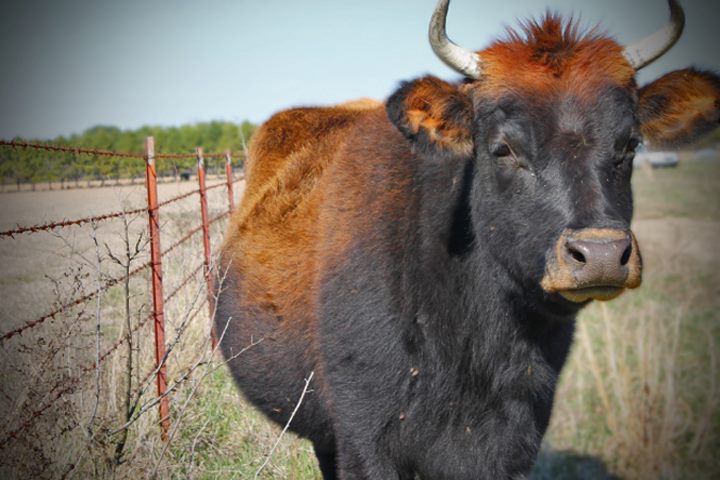The United States continues to suffer worst drought in half a century. Most of the media coverage tells of horrible corn and soybean yields and the rising food costs we'll be seeing in grocery stores next year.
Often left out of the conversation, however, are the small farmers who grow for local markets, particularly those who can't afford crop insurance or who raise livestock (which doesn't have the same safeguards as staple crops). Despite being typically diverse in what they grow (generally a good strategy for mitigating disasters like weather or pests), the lack of rainfall and incredibly high temperatures are taking a serious toll.
One of these farmers is a personal friend of mine. In fact, we first met as volunteers at Heifer Ranch. Katie Short of Farm Girl Natural Foods raises pigs, cattle and chickens. She was recently interviewed by a Central Arkansas newspaper, Sync Weekly, about how the drought has affected her operations. She said:
Spring rains usually give us enough grass; it’s called stockpiling, and it piles up in pasture enough to get through hot dry months. But we did not get that spring rain, so we did not get the spring grass. So that’s been the number one concern — is there enough forage to feed our animals, primarily the cows? We supplement the chickens and pigs with grains, and they’re eating more grain than they would otherwise. With the cattle, we’ve had to make some hard decisions, and we’ve started to cull the herd to preserve grass we have.
And:
Think of the range in this drought; much of the grain fed to chickens and pigs is grown in the grain belt in the Midwest, and they’ve been impacted. I’ve seen some forecast of grain prices, and that’s terrifying. It affects the decisions we make in the long-term of our operation in terms of animals we can support sustainably.

Small livestock farmers like Short are being slammed in all directions as a result of the drought. Lack of rainfall dries out pastures; it's too expensive to irrigate the fields; they can't afford the supplemental feed the animals need in the short-term; they'll end up selling their products sooner and at lower prices; the livestock feed costs for next season will be even higher, as this year's grain harvests will be so bad; and there is little to no external assistance available (while President Obama's announcement that the U.S. government would purchase $170 million in meat from farmers and ranchers, it is unclear what the qualifications for receiving this assistance will be) .
This isn't happening only in Arkansas (though can I say we're looking particularly bad on the map above?). And it's not just small livestock farmers. So what can we do about it? Well, this is a great example of when buying locally really can make a difference. Go to your farmer's market or nearest produce stand. Buy the ugly tomatoes, the smaller-than-desirable ears of corn, the cuts of meat you usually pass over. Meet the farmers, get to know their stories. Ask them how they're coping with the weather. Offer your sympathy, and buy some of their products.